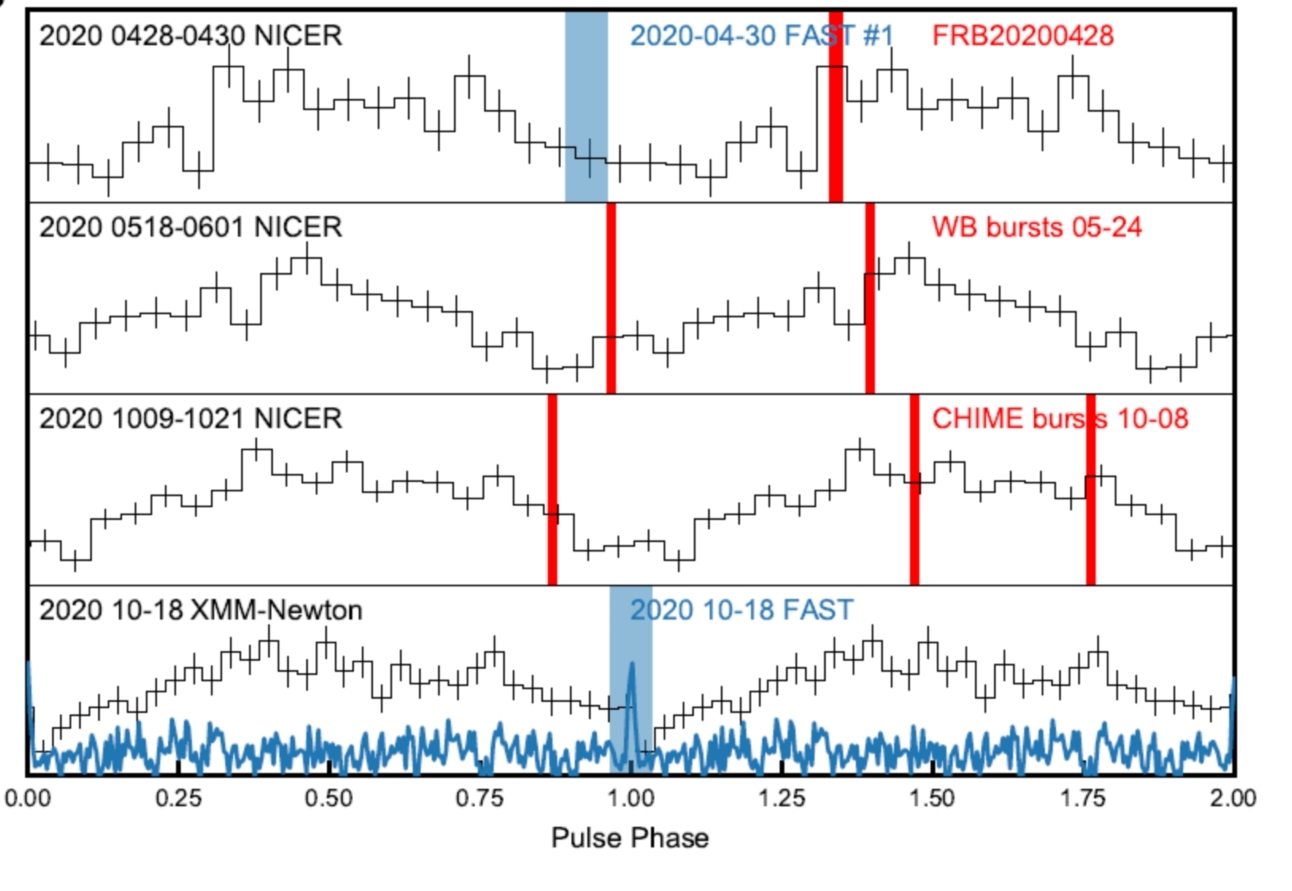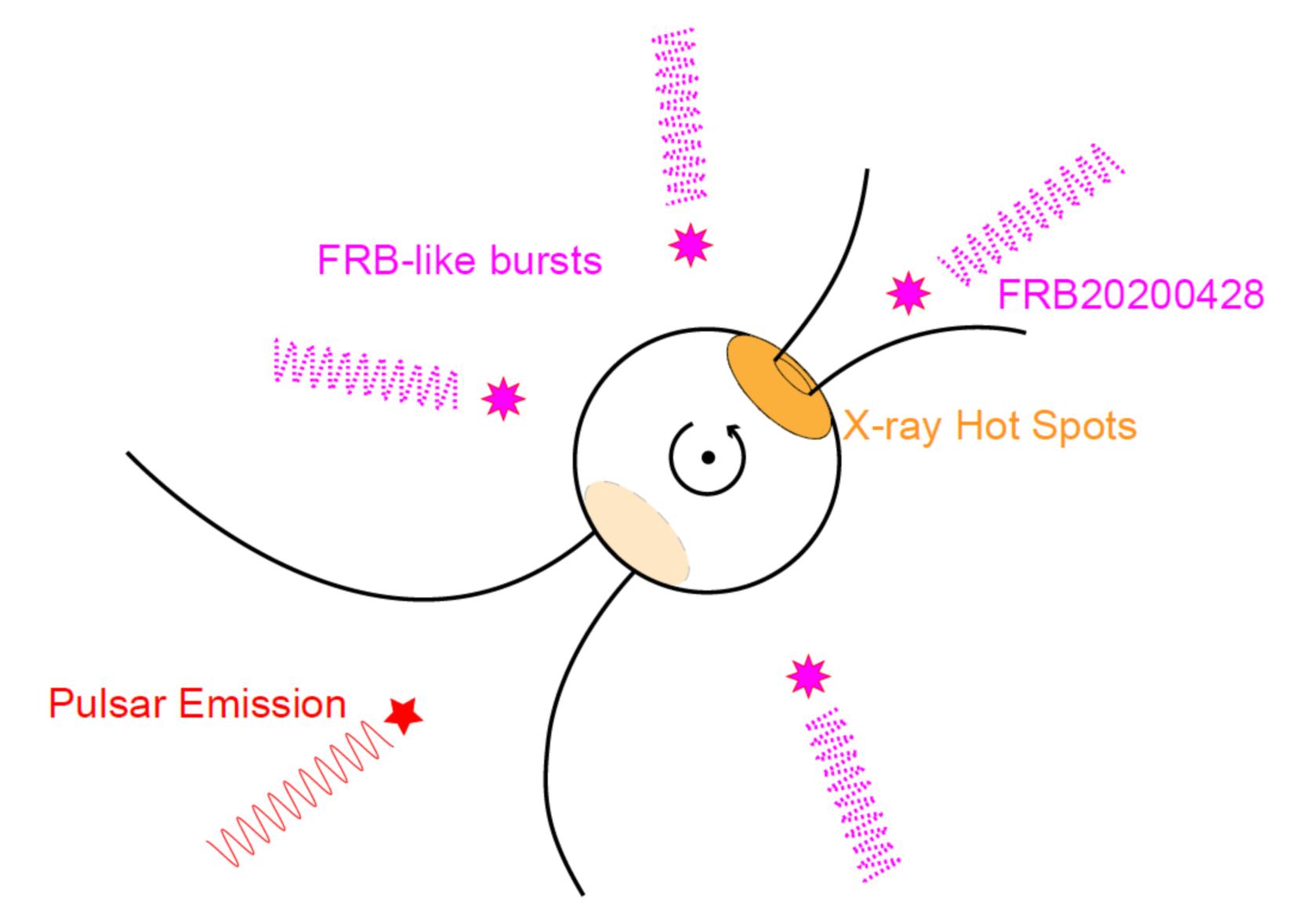Multi-wavelength Observations Reveal the Characteristics of Magnetar Fast Radio Burst Mechanisms
The FAST priority major team conducted a month-long monitoring campaign of SGR J1935+2154 starting in October 2020 and successfully detected single-pulse radio emissions from this source. Although these emissions are approximately ten magnitudes weaker than fast radio bursts (FRBs), the radio pulsar phase emission exhibits a very regular pattern, with the pulse generation region occupying less than 7% of the total rotational phase. Moreover, through simultaneous X-ray observations, the team found that the phase of the radio pulse emission is anti-correlated with the peak phase of the X-ray profile (as shown in Figure 1). This characteristic differs from other FRB-like bursts, which tend to have phases distributed randomly. This discovery suggests that the production mechanism of FRBs is likely distinct from that of pulsar emissions, possibly involving explosive processes that can disrupt the stability of the magnetosphere, thus allowing them to occur at various rotational phases (as illustrated in Figure 2). This conclusion holds significant implications for understanding and modeling the mechanisms that generate FRBs. It also helps explain why repeating FRBs rarely exhibit notable spin periodicity. The findings provide valuable insights into the nature of FRBs and their potential sources, highlighting the complexity and variability of these mysterious astrophysical phenomena.

Figure1. Multi-wavelength observations of SGR J1935+2154. Comparison of the single pulses from the pulsar, magnetar FRB bursts, and their X-ray profiles as observed by FAST.

Figure2. Schematic illustration of the geometric relationship between the pulsar phase emission and fast radio burst (FRB) emission from SGR J1935+2154.
REFERENCE:http://www.nao.cas.cn/news/ky/202307/t20230729_6847865.html
PAPER:science.org/doi/10.1126/sciadv.adf6198